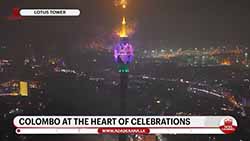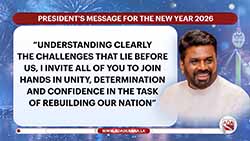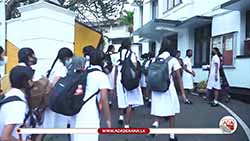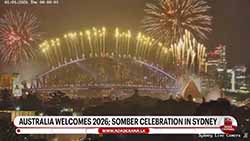Zeid urges creation of hybrid special court in Sri Lanka
September 16, 2015 02:14 pm
A UN report published today has identified patterns of grave violations in Sri Lanka between 2002 and 2011, strongly indicating that war crimes and crimes against humanity were most likely committed by both sides to the conflict.
The report recommends the establishment of a hybrid special court, integrating international judges, prosecutors, lawyers and investigators, as an essential step towards justice.
“Our investigation has laid bare the horrific level of violations and abuses that occurred in Sri Lanka, including indiscriminate shelling, extrajudicial killings, enforced disappearances, harrowing accounts of torture and sexual violence, recruitment of children and other grave crimes,” High Commissioner Zeid said. “Importantly, the report reveals violations that are among the most serious crimes of concern to the international community as a whole.”
“This report is being presented in a new political context in Sri Lanka, which offers grounds for hope,” Zeid said. “It is crucial that this historic opportunity for truly fundamental change is not allowed to slip.”
Among the most serious crimes documented in the report are the following:
• Unlawful killings: Numerous unlawful killings between 2002 and 2011, were allegedly committed by both parties, as well as by paramilitary groups linked to the security forces. Tamil politicians, humanitarian workers, journalists and ordinary civilians were among the alleged victims of Sri Lankan security forces and associated paramilitaries. There appear to have been discernible patterns of killings, for instance, in the vicinity of security force checkpoints and military bases, and also of extrajudicial killings of individuals while in the custody of security forces, including people who were captured or surrendered at the end of the conflict. The Liberation Tigers of Tamil Elam (LTTE) also reportedly killed Tamil, Muslim and Sinhalese civilians, through indiscriminate suicide bombings and mine attacks, as well as assassinations of individuals including public officials, academics and dissenting Tamil political figures.
• Sexual and gender-based violence: One shocking finding of the investigation was the extent to which sexual violence was committed against detainees, often extremely brutally, by the Sri Lankan security forces, with men as likely to be victims as women. Harrowing testimony from 30 survivors of sexual violence who were interviewed indicates that incidents of sexual violence were not isolated acts but part of a deliberate policy to inflict torture, following similar patterns and using similar tools. The report describes sexual torture which occurred during interrogation sessions, and also patterns of rape, much of which appeared to occur outside of interrogations sessions. Sexual torture was performed in a wide range of detention locations by different security forces, both during and after the conflict. Not a single perpetrator of sexual violence related to the armed conflict is so far known to have been convicted.
• Enforced disappearances: Enforced disappearances affected tens of thousands of Sri Lankans for decades, including throughout the 26-year armed conflict with the LTTE. There are reasonable grounds to believe that enforced disappearances may have been committed as part of a widespread and systematic attack against the civilian population. In particular, there are reasonable grounds to believe that a large number of individuals who surrendered during the final phase of the war were disappeared, and remain unaccounted for. Many others, including people not directly linked to the conflict, disappeared, typically after abduction in ‘white vans.’
• Torture and other forms of cruel, inhuman or degrading treatment: Brutal use of torture by the Sri Lankan security forces was widespread throughout the decade covered by the report, and in particular during the immediate aftermath of the conflict. Some of the more commonly used centres had rooms that were set up with torture equipment, illustrating the premeditated and systematic nature of the use of torture. These rooms contained objects including metal bars and poles for beatings, barrels of water used for waterboarding, and pulleys from which victims were suspended. Victims interviewed for the report described seeing bloodstains on the walls or floors of these rooms, and described their own torture in detail.
• Recruitment of children and their use in hostilities, as well as abduction and forced recruitment of adults: Information indicates patterns of abductions leading to forced recruitment of adults by the LTTE, which intensified towards the end of the conflict. Extensive recruitment and use of children in armed conflict by the LTTE and by the paramilitary Karuna group, which supported the Government following its spilt from the LTTE in 2004, was also documented. Children were often recruited by force from homes, schools, temples and checkpoints, and, after basic training were sent to the frontlines. According to numerous reports, in the last few months of the conflict, the LTTE increasingly recruited children below the age of 15. These practices would amount to war crimes if established in a court of law.
• Attacks on civilians and civilian objects: There are reasonable grounds to believe that many attacks during the last phase of the war did not comply with international humanitarian law principles on the conduct of hostilities, particularly the principle of distinction. The report documents repeated shelling by Government forces of hospitals and humanitarian facilities in the densely populated ‘No Fire Zones,’ which the Government itself had announced but which were inside areas controlled by the LTTE. Directing attacks against civilian objects and/or against civilians not taking direct part in hostilities is a serious violation of international humanitarian law and may amount to a war crime. The presence of LTTE cadres directly participating in hostilities and operating within the predominantly civilian population, launching attacks from close proximity of these locations, and the LTTE policy of forcing civilians to remain within areas of active hostilities, may also have violated international humanitarian law. However, this would not have absolved the Government of its own responsibilities under international humanitarian law. The duty to respect international humanitarian law does not depend on the conduct of the opposing party, and is not conditioned on reciprocity.
• Denial of humanitarian assistance: There are reasonable grounds to believe that the Government placed considerable restrictions on freedom of movement of humanitarian personnel and activities, and may have deliberately blocked the delivery of sufficient food aid and medical supplies in the Vanni in the Northern Province, which may amount to the use of starvation of the civilian population as a method of warfare. Such conduct, if proven in a court of law, may constitute a war crime.
• Violations during the detention of internally displaced people (IDPs) in closed camps: The manner in which the screening processes were carried out, to separate former LTTE combatants from civilians, failed to meet international standards and facilitated ill-treatment and abuse. Almost 300,000 IDPs were deprived of their liberty in camps for periods far beyond what is permissible under international law. There are also reasonable grounds to believe that IDPs were treated as suspects and detained because of their Tamil ethnicity. This may amount to discrimination and the crime against humanity of “persecution.”
The report documents years of denials and cover-ups, failure to carry out prompt investigations, stalled investigations and reprisals against the family members of victims and others who have pushed for justice.
It notes that the repeated failure of successive domestic inquiries to bring justice has led to scepticism, anger and mistrust on the part of victims, particularly since “many of the structures responsible for the violations and crimes remain in place.” The report demonstrates the systemic weakness in addressing these crimes, especially when the military or security forces are involved. It also describes “reprisals against judicial and other professionals who try to prosecute human-rights related cases involving State officials.”
“The commitment by the new Government to pursue accountability through a domestic process is commendable…but the unfortunate reality is that Sri Lanka’s criminal justice system is not yet ready,” the report states. “First and foremost is the absence of any reliable system for victim and witness protection. Second is the inadequacy of Sri Lanka’s domestic legal framework to deal with international crimes of this magnitude. The third challenge is the degree to which Sri Lanka’s security sector and justice system have been distorted and corrupted by decades of emergency, conflict and impunity.”
The High Commissioner welcomed the positive steps taken by the new Government of President Mathiripala Sirisena since January this year, but said that “Sri Lanka must now move forward to dismantle the repressive structures and institutional cultures that remain deeply entrenched after decades of erosion of human rights.”
“This will not happen overnight, and no one should underestimate the enormity of the task,” he said. “We have seen many moments in Sri Lanka’s history when governments pledged to turn the page and end practices like enforced disappearances, but the failure to address impunity and root out the systemic problems that allowed such abuses to occur meant that the ‘white vans’ could be, and were, reactivated when needed. It is imperative that the Government seizes the unique opportunity it has to break the mold of impunity once and for all. This means there must be a root-and-branch transformation of the ways in which institutions and officials operate.”
The report recommends a range of measures to develop a comprehensive transitional justice policy to address the human rights violations of the past 30 years and prevent their recurrence.
The High Commissioner urged all communities and sections of society, including the diaspora, to view the report as “an opportunity to change discourse from one of absolute denial to one of acknowledgment and constructive engagement to bring about change.”
“After so many years of unbridled human rights violations and institutionalized impunity, the wounds of victims on both sides have festered and deepened,” Zeid said. “Unless fundamentally addressed, their continued suffering will further polarize and become an obstacle to reconciliation, and – worse – may sow the seeds for further conflict.”
“The levels of mistrust in State authorities and institutions by broad segments of Sri Lankan society should not be underestimated,” the High Commissioner said. “It is for this reason that the establishment of a hybrid special court, integrating international judges, prosecutors, lawyers and investigators, is so essential. A purely domestic court procedure will have no chance of overcoming widespread and justifiable suspicions fuelled by decades of violations, malpractice and broken promises.”
“The domestic criminal justice system also needs to be strengthened and reformed, so it can win the confidence of the public, but that is a process which will take several years to achieve and needs to be undertaken in parallel to the establishment of a special hybrid court, not in place of it. Indeed such a court may help stimulate the reforms needed to set Sri Lanka on a new path to justice, building public confidence along the way.”
The UN Human Rights Office (OHCHR) was mandated by the UN Human Rights Council last year to conduct a comprehensive investigation into alleged serious violations and abuses of human rights and related crimes by both parties in Sri Lanka during the period 2002-11.
The investigation report is based on eye-witness testimony, interviews with victims and witnesses, video and photographic material including satellite imagery (much of which is not in the public domain) that was analyzed by forensic and military experts, and an extensive review of documentation, including about 3,000 written statements and submissions, as well as previously unpublished reports.
The OHCHR investigation team was not granted access to Sri Lanka and faced other constraints, including the previous Government’s use of threats, intimidation and surveillance to prevent people, particularly in the north of the country, from cooperating with the investigation.
See Below for Advanced Unedited Version of Report:












